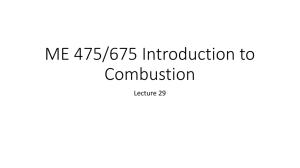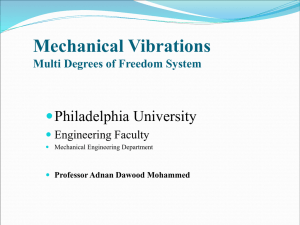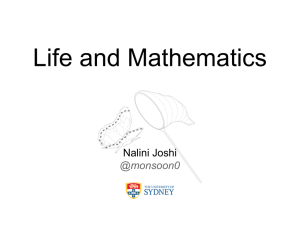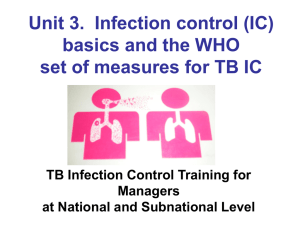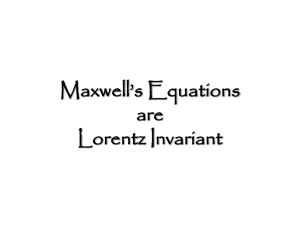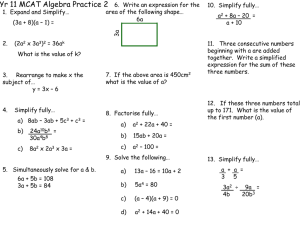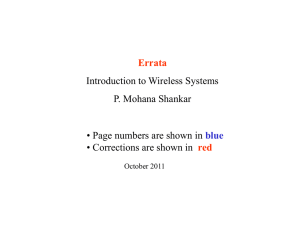Examples Paper 4 Question 2 (Mass Transfer)
advertisement
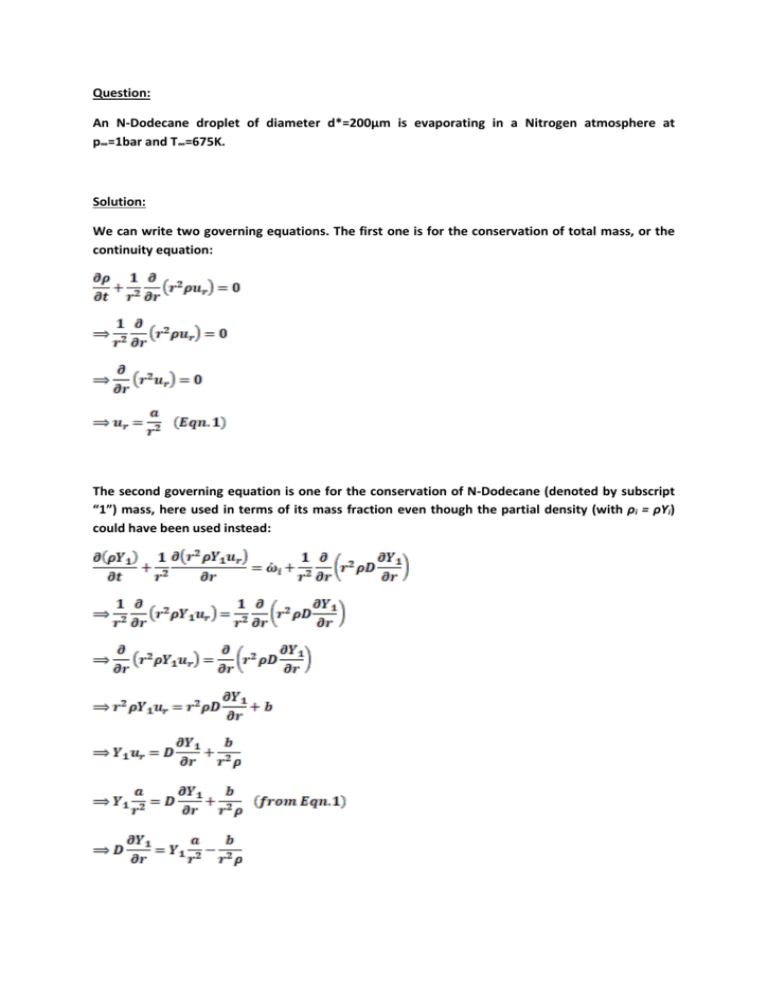
Question: An N-Dodecane droplet of diameter d*=200μm is evaporating in a Nitrogen atmosphere at p∞=1bar and T∞=675K. Solution: We can write two governing equations. The first one is for the conservation of total mass, or the continuity equation: The second governing equation is one for the conservation of N-Dodecane (denoted by subscript “1”) mass, here used in terms of its mass fraction even though the partial density (with ρi = ρYi) could have been used instead: The final equation for Y1 is not really required in this question, but is the cornerstone of most mass transfer problems. In order to get a better understanding, we can make a parenthesis here, not linked directly with our solution to this problem. There is a further equation, for the conservation of Nitrogen (denoted by subscript “2”) mass, but it looks identical to the above for N-Dodecane, resulting in different values for the constants a, b and c: However, and crucially, this is not an independent equation. In a multi-component mixture mass transfer problem, say with n species, one can either use the continuity equation plus n-1 species mass conservation equations, or n species mass conservation equations without continuity. This is because the continuity equation can be obtained by adding up all n species mass conservation equations: An equivalent consequence of the above is that: where it is clear that the equations are identical and the constants related to one another: We return now to our problem solution. We are interested in the change (decrease) in the diameter of the droplet as N-Dodecane evaporates and escapes to the surrounding atmosphere. Physically, the diameter of the droplet decreases because the droplet loses mass. Hence, we will need to relate the rate of loss of droplet mass, denote this by m, to the mass flow rate of N-Dodecane away from the droplet, : This statement is entirely equivalent to in heat transfer. The mass flow rate of N-Dodecane is equal to its total mass flux, G1, advective and diffusive, multiplied by the area perpendicular to this flux, which in problems with spherical symmetry is 4πr2, and since m = ρlV (the liquid, not ρ, the vapour density) with V = πd*3/6 for a spherical droplet: Hence, we see that we need to know G1. By definition, and from Eqns. 1 and 2: Substituting Eqn. 5 into Eqn. 4 gives: Note that this equation may be written at any radius away from the droplet, since the mass flow rate (not mass flux) of N-Dodecane away from the droplet is conserved, which manifests itself with the right hand side in Eqn. 6 as well as Eqn. 4 being a constant, i.e. b. The final aim is to find b, and this will be done by considering boundary conditions. Apply boundary condition at Apply boundary condition at : : Substituting Eqn. 8 into Eqn. 7: Here we have two unknown constants, b and a, the first useful and the second undesirable that we would like to remove. The constant a originated from Eqn. 1 that involved the mass-weighted average or overall velocity ur. This velocity can be related to the mass flux of N-Dodecane (denoted by subscript “1”) by considering the fact that although N-Dodecane vapour is flowing away from the droplet surface, a process which is supplied by the continuous evaporation of NDodecane at the droplet surface, the second species in the two-component mixture, that is Nitrogen (denoted by subscript “2”), is not flowing either away or towards the droplet. Physically, this is because the N-Dodecane can escape to the surroundings that have a capacity for absorbing it, whereas Nitrogen, in the absence of a consuming mechanism on the droplet surface (e.g. a heterogeneous reaction of some sort) cannot flow into the droplet, or better does this a rate that is so slow that it can be considered negligible. Now, note that for the total mass flux, that is mass flow rate per unit area: Now, we may return to Eqn. 9 and substitute the result in Eqn. 10: Substituting Eqn. 11 into Eqn. 10: Substituting Eqn. 12 into Eqn. 6, where:
